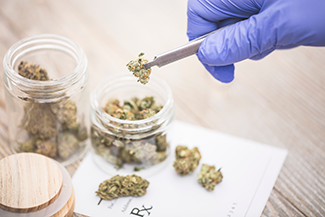
Methamphetamines and Opiates, A Dangerous and Fatal Cocktail
3 September 2020
Dancing through Drug Rehab
3 September 2020The Pursuit of an Effective Pain Treatment
Chronic pain effects a large portion of the population, limiting their ability to partake in meaningful daily activities and reducing their quality of life. For years, doctors have turned to prescription opioids to help their patients cope with the pain and regain some quality of life. Although opioids were marketed as effective pain killers, there remains a lack of evidence for their efficacy in treating chronic pain. It appears there are effective alternatives to opioids, but barriers often prevent doctors from prescribing these medications to their patients. For example, medical marijuana has been shown to not only effectively treat chronic pain, but also reduce the underlying inflammation which often exacerbates said pain. Unfortunately, due to the illegal classification of cannabis and legal classification of prescription opioids, as well as the potential for profit for pharmaceutical companies, research regarding medicinal marijuana has lagged behind that of other treatments for chronic pain. Ultimately, this limits doctor’s ability to prescribe medical marijuana in an appropriate and effective manner. Further, legality limits many patients’ access to medical marijuana.
The Benefits of Medical Marijuana
Despite the hesitancy of many regulatory bodies and prescribing physicians, there are clear benefits of medical marijuana. Indeed, medical marijuana is more effective than currently available prescription medications for the treatment of certain types of pain. Further, laws allowing medical marijuana are associated with curtailed opioid prescriptions and reduced opioid overdoses.

Mainstream Medical Marijuana
In a recent CNN documentary, NFL player Mike James explains how he was able to eliminate his ongoing opioid use, which was taking its toll on his personal and professional life, by switching to medical marijuana. He continues to advocate for the use of medical marijuana as a safe and effective alternative, and is working toward the acceptance of medical marijuana use in the NFL. Currently, prescription opioid use is permitted in the league, but medical marijuana is not, in spite of the relatively minimal risk of deleterious side effects compared to opioids.
In the face of an opioid epidemic and high rates of chronic pain, effective alternatives for treatment must be sought. The medical merit of drugs should be considered, regardless of their legal classification. In the pursuit of a healthy life, a balance between effectiveness and safety should be the ultimate goal when deciding on a course of treatment. As research continues to reveal the benefits and risks of medications, we will be better equipped to provide patients with the best evidence-based treatments.




